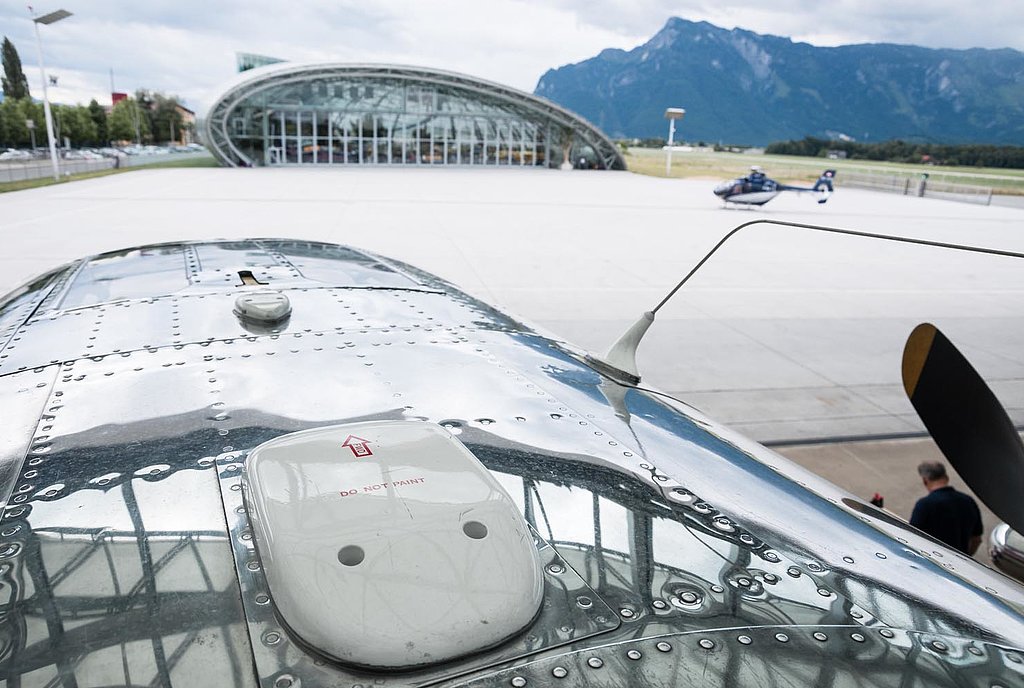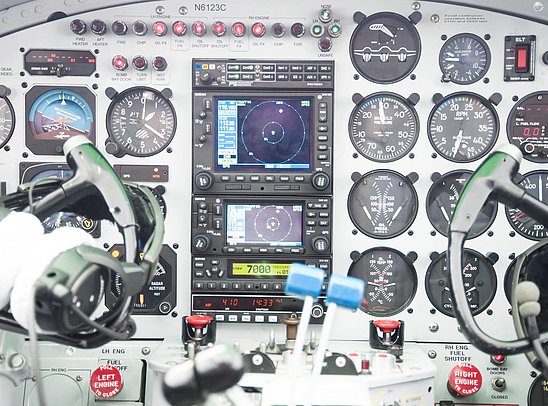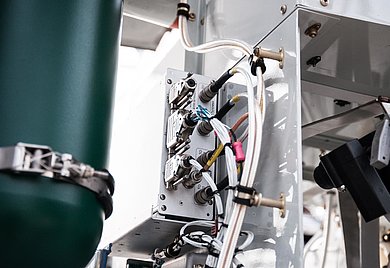TAS
Traffic Advisory System for Warbirds
In order to avoid collisions in the air, most aircraft are equipped with an appropriate warning system. The Flying Bulls Warbirds have also been retrofitted with such a system.
The system requirements vary depending on the size and type of aircraft. When it comes to passenger planes with a take-off weight of at least 5,7 tons, or more than 19 passengers on board, a TCAS (traffic collision advisory system) is compulsory in European air space. The Flying Bulls Warbirds, however, have been equipped with TAS (traffic advisory system). The principle is the same in both systems – the transponders of all the aircraft in the vicinity are actively checked and, using the time and direction of the answering impulse, the direction of anddistance to the aircraft is determined. As soon as the system assesses that two machines are heading for a collision, it triggers an alarm. With TCAS the crew is advised of a specific collision avoidance manoeuver in the form of descending or ascending. TAS only shows the aircraft that also have a transponder on board and in situations where there is a dangerous approach, a warning is given and the crew have to decide themselves which manoeuver to perform.
With TAS, the Flying Bulls can rely on two different systems. Based on the aircraft’s size and available space, the system with the bestperformance is selected. The two systems are different due to the type of antennae utilised. For example, the large antenna in the Skywatch system from L-3 Communications would not be ideal for the P-38’s small fuselage and for that reason it uses the TAS600 (made by Avidyne). This comes with two smaller antennae, one located on the top of the fuselage and one on the bottom. For the Corsair, on the other hand, which only has a limited amount of space on top of the fuselage, this system would not be suitable.
The TAS has been incorporated into the Warbirds over the course of a number of years – the Corsair had TAS installed in 2009, the P-38 and B-25 a year later. The scope of the installation work is substantial; for example, antennae must be mounted and cables laid in the fuselage. For this reason, such work is mostly carried out during large-scale maintenance. Once it is installed the system itself is maintenance-free and only needs to be checked during the appropriate aircraft checks carried out after an error messageis shown.
As with all other electronic systems on board, the TAS is also supplied with power by the aircraft’s on-board energy supply, that is to say the battery and generators. The TAS, which was developed back in the late 1950s, is a relatively simple system with few components. The digital redundancy autopilot of the Falcon is much more complex by comparison. The visual display is usually on the so-called multi-function displays in the cockpit, while voice announcements and warnings are given via existing speakers and headsets.
After its installation the operation of TAS is of course thoroughly tested. There is special testing equipment for this, which acts like a second aircraft approaching the aircraft being tested and thus inspects the functionality of the built-in warning system. Various scenarios can be programmed to check the system completely. The T-28 will be the next aircraft to be fitted with a Traffic Advisory System during its restoration programme.



